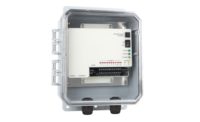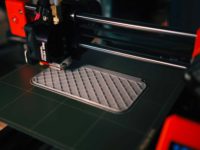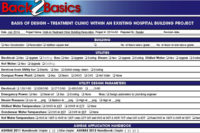A smart HVAC solution can address many of the challenges posed by metal buildings. Building managers and developers can improve air quality, temperature, humidity, and safety by choosing the right HVAC system. Metal buildings have some unique traits to consider when adding any type of HVAC solution, and a few options may work better than others.
What do building managers and developers need to know about how to add an HVAC system to a metal building successfully? What preparation steps should they take? Here are five tips to get started.
1. Consider all heat sources
Heat sources play a pivotal role when it comes to installing HVAC systems in metal buildings. Heating and cooling metal buildings isn’t as simple as measuring the size of the building and installing a piece of equipment. Activities inside the building can create heat that significantly affects HVAC needs.
For example, a metal building might be used as a machine shop, where a dozen people frequently use heavy machinery. The shop’s machinery will create a noticeable amount of heat every day that needs to be accounted for. Otherwise, the a/c system might fail to adequately compensate for increased heat during regular operating hours.
Heat can also come from sources that might not be noticeable at first. For instance, a metal building serving as a church or community center will typically have large groups of people. While the structure might be cold when only a few people are inside, it could become uncomfortably hot during normal use with large groups.
Of course, the outdoor environment is also crucial — particularly when it comes to temperature ranges and humidity. Even the orientation of the building can create additional heat sources. A large, bare, unshaded wall facing the sun can quickly heat up a metal building.
As a general rule, plan for extreme hot and cold temperatures. When determining what those temperatures could be, factor in the external environment as well as internal sources of heat, like machinery or crowds.
2. Invest in good insulation
The No. 1 addition to metal buildings for good HVAC performance is high-quality insulation, as it can address several common challenges and significantly improve operating efficiency.
The bare walls of a metal building naturally have inadequate insulation, which can lead to poor and inconsistent heating and cooling. Additionally, metal buildings often struggle with moisture management, which can be especially problematic when it comes to cooling. A metal building could have the best HVAC system on the market, but heating and cooling will remain a challenge without proper insulation.
Utilize energy codes for building insulation
Developers and building managers have several options for insulation today. Metal buildings have specific insulation needs, so it is worth understanding how different types fit energy codes and standards. Complying with energy codes and standards will not only ensure the building is following local regulations but also help with performance.
Energy codes outline standards for features, like air barriers and building envelope performance. These traits are vital for metal building HVAC performance because they impact how well the building manages moisture and retains heat. Referring to state energy rules can be very helpful when choosing and designing insulation for a metal building. In fact, state-specific regulations will include guidance on the specific climate a building is in, which can jumpstart the insulation design process.
In general, good insulation for a metal building should have superior moisture management features. Metal buildings frequently suffer from internal sweating, which can lead to corrosion. Sweating can also worsen humidity, augmenting interior heat and reducing air quality. Good insulation will also help resolve the noise leakage metal buildings experience.
3. Always plan ahead for HVAC
Failing to account for the HVAC system in the initial design phase is a common mistake with metal buildings. Factor in the HVAC system as early in the building design process as possible. This is crucial because the HVAC system will often require certain design specifications that may require timely and/or costly work to alter down the road.
For example, the metal roofs have a weight limit, and the HVAC system cannot exceed it. In fact, in can’t even meet it, as there will need to be some buffer space for other equipment, snowfall, maintenance crew, tools, etc. Similarly, the roof may be too low or incorrectly shaped to fit the HVAC system properly, requiring renovations. Additional features — like the frame for an overhead door — can also interfere with ceiling-based HVAC systems.
Although it may require a better strategy and more money, adding an HVAC system to a metal building after construction is still possible.
Focusing on what the building already has, such as good ventilation from doors or windows, and leveraging those design strengths to choose an HVAC system will ensure it works with the existing features of the building.
4. Consider heat pumps as an HVAC Alternative
Some metal buildings simply aren’t well-designed to accommodate a traditional HVAC system with a furnace and a/c unit. In cases like these, a heat pump can be a great alternative.
Heat pumps are similar in some ways to a/c and furnace units, but one important distinction is heat pumps run off electricity, which could be a pro or con depending on the building’s location. If the building manager or owner prefers electrification, heat pumps are a great option. However, an a/c and furnace might be better if electricity availability is spotty.
Similarly, heat pumps are only ideal in some climates. They are good in moderate environments, where temperatures don't go below freezing. A heat pump can be very efficient at both heating and cooling, but that efficiency declines in more extreme temperatures. However, heat pumps provide simplicity by combining the functions of a furnace and a/c into one piece of equipment.
5. Chilled beam or displacement ventilation
Since metal buildings in warm climates require efficient cooling and humidity control, chilled beam or displacement ventilation systems can be excellent options.
Chilled beam systems
Chilled beam systems use cold/hot water pipes to control temperatures. As air rises and falls in the room, it passes over the chilled beam’s coils, where the hot or cold water changes the air temperature.
The main benefit of chilled beam a/c for metal buildings is the energy efficiency. They don’t require much energy to operate, especially compared to a/c and furnace systems. Chilled beam systems are also quiet and relatively low maintenance. However, a furnace will be more effective at heating than a chilled beam system will.
Displacement ventilation
Another excellent cooling option for metal buildings is displacement ventilation. This type of a/c is particularly well-suited for metal buildings that are used for workshops. Displacement ventilation utilizes the natural mechanics of airflow to cool spaces from the ground up. Cold, clean air is exhausted through floor-level vents, which forces warm, polluted air up to vents in the ceiling.
Displacement ventilation excels at low-energy cooling. As an added benefit, it is also great for clearing the air of pollutants and improving IAQ and safety in metal buildings. Experts estimate air pollution causes 4.2 million deaths annually, including at least 16% of lung cancer deaths.
Workshop spaces often struggle with managing ambient pollution from debris and machinery. Displacement ventilation can be a great solution for cooling a metal building efficiently and maintaining clean and healthy air.
Adding HVAC systems to metal buildings
HVAC systems improve air quality, temperature control, humidity, and heat management in metal buildings. To maximize HVAC performance, building managers and developers can take several steps before selecting and installing equipment to ensure maximum efficiency and optimal performance.
Whether it’s a workshop, a home, or anything between, an intelligent HVAC solution can improve any metal building.





